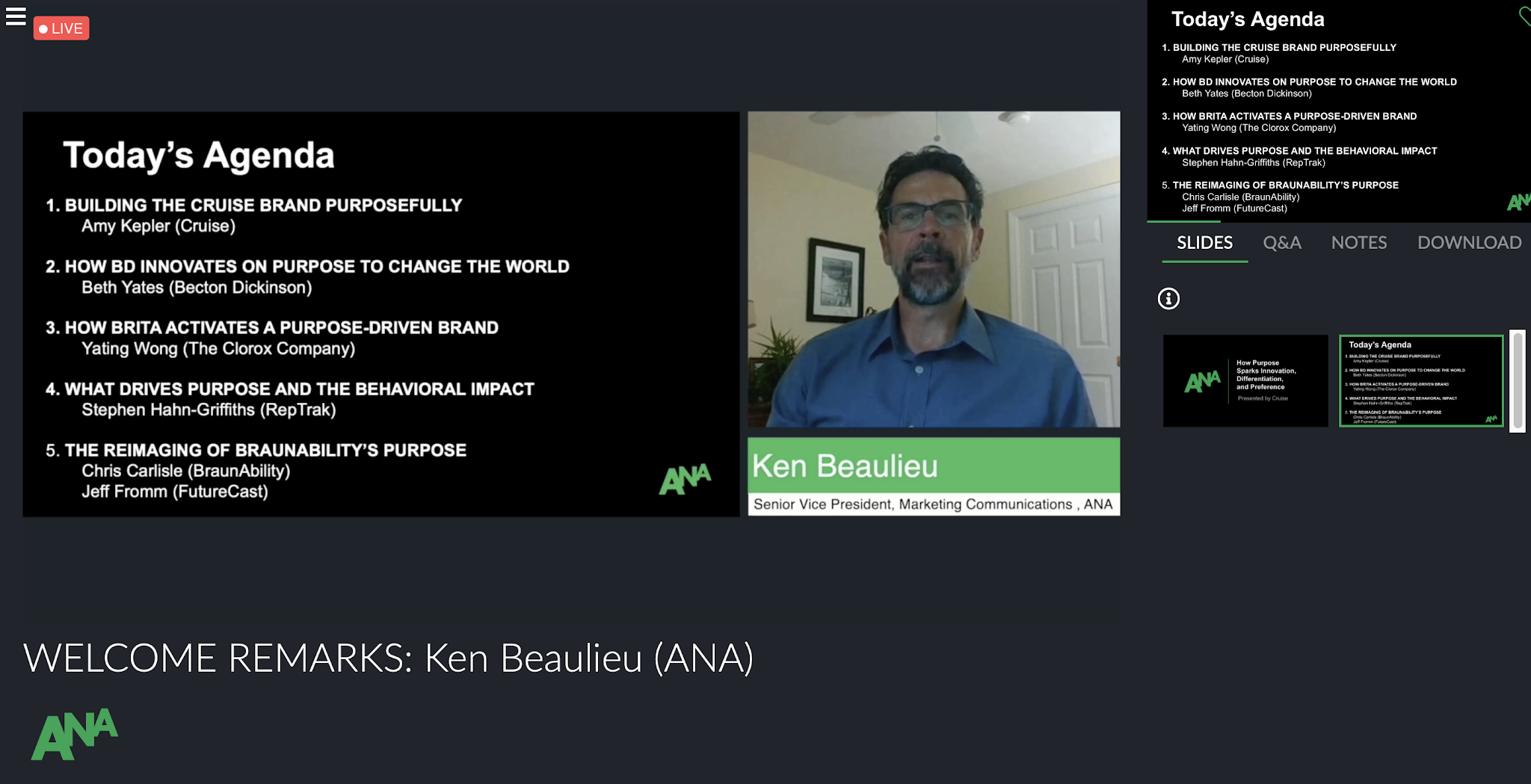ARF Salon Series: TV killed the Radio Star, But Will Anything Kill Upfronts?
ARF Salon Series 2019
TV killed the Radio Star, But Will Anything Kill Upfronts?
Thursday, April 25, 2019
@ ARF | 432 Park Avenue South, 4th floor, NY, NY 10016
About ARF:
Since 1936, the Advertising Research Foundation has been the standard-bearer for unbiased quality in research on advertising, media and marketing. It’s powerful knowledge, unifying standards and best practices have benefited its 400+ member companies many times over. [Learn More]
“Media consumption has fragmented across platforms, and the lines between TV and digital continue to blur. Despite these shifts, TV networks’ annual efforts to attract ad dollars, the “Upfronts,” still reign as the most important revenue-generating events of the year. The accompanying “Newfronts” underscore the number of players contributing to new video content and the upheaval in viewing habits.” - Carol Hinnant, EVP National Networks, Comscore
The media landscape has changed. TV killed the Radio Star, and what’s next? The panel was led by Carol Hinnant to discuss the key questions regarding the relationships among content, ad revenue, ad buying, and their predictions on what the future may hold.
The participates of the pannel include:
- Lauren Benedict ‒ VP of National Sales, Hulu
- Lauren Zweifler ‒ SVP, Insight & Measurement, Vertical Solutions, NBCUniversal
- Jonathan Steuer ‒ Chief Research Officer, Omnicom
- Beth Rockwood ‒ SVP, Portfolio Research, WarnerMedia
- Jennifer Kohl ‒ SVP Executive Director – Integrated Media, Young & Rubicam
Do the Upfronts still work and are they really the most effective way to influence ad buyers?
“None of its rival media match television’s ability to build brands by virtue of the fact that more people watch television and its adverting.” - Comscore 2018 research.We both know time spent with media has tripled in the past few years, but surprisingly linear Television is still massive. According to the research, we still are able to reach around 77~80% of people during 6-10pm daypart. (include millennial, generation X and Z.) But the way most of the people watch the film or television content has changed. OTT (Over the top) viewing has become a mainstream media behavior in U.S. 64 million homes used OTT. 66% reach among homes with wi-fi, and it was spread across 16 average viewing days.
So what does it matter? And what are the expectations for how it will evolve?
It means people are watching more video than ever before, which also shows that there are more opportunities to engage with customers. When we are seeing more convergence between digital and television, we need to know more what’s the best way to reach the audience across the board.The audience is moving from TV to digital at an unbelievable speed, average monthly minutes on TV for the network increased by 23% when viewers consumed on digital as well as TV. As a media and advertising professional, understand how Television and digital work together become one of the important issues to us.
How will the buying marketplace work, if the Upfronts and Newfronts no longer have the same impact?
“We are facing a great shift, to maintain the reach and we must need to know when who and how we can engage with.” - Lauren Benedict ‒ VP of National Sales, HuluOne thing we can make sure is that the need for the video content is there, this is not changing. The changed things are that the audience behaviors and channel preferences changed. So we can still expect a big investment in content and creation in the future. The money just moved from local channels to digital, and the flow of the investment becomes more transparent.
How will the buying marketplace work, if the Upfronts and Newfronts no longer have the same impact? And how could we measure it?
The ways audience watching video content varies. It becomes more individual, and it also becomes a challenge when we measure the impact and impression with the audience. The next thing we can do and will be great to do could be we will know clear the impact of each audience. Therefore, when we buy the media and plan the advertising budget, we can utilize the data to adjust the buying strategy and make sure we are targeting the right audience.“There is not only one way to spread the money, and it’s the most fun in the game.” - Jennifer Kohl, SVP Executive Director, Integrated Media, Young & Rubicam
The technology and data analysis have revealed a new era, TV is not dead but we also can see a huge revolution in the current TV marketplace including the media evolution and its impact on the Upfronts, the relationship between content and ad revenue, ad buying, and their predictions. No matter what’s the next star to replace TV, it will be worth to expect!




